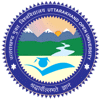User:Wikitrainers/page:DECP05-Unit3-Ch3
| Home | About UOU | About CEMCA | Contact Us
| |||||||||||||||||||
|
Chapter 3: Tools & technologies for delivering E-Content
Introduction
There are many types of technology available to create the e-Content and various approaches can be used to make learning objects available over the web. The simplest approach is to generate web pages containing these resources and make the web pages available through a web site for the course. The other approach is to use a full-fledged course management system such as a Learning Content Management System (LMS). Other approaches may include CD-ROM, print based material, presentational slides etc. e-Learning materials can be delivered using different modes; asynchronous or self study learning, synchronous leaning and blended learning.
The recent advances in the distance education have potential to fill the gaps between time and location constraints. Distance learning is now truly able to help bridging the digital divide and realize the purpose of the flexible education and lifelong learning.
The distance learning could be divided into asynchronous and synchronous learning
|
| |||||||||||||||||
| OER - Post Graduate Diploma in eLearning Uttarakhand Open University
|
====== Design By: Yogesh Munjal == | ||||||||||||||||||
